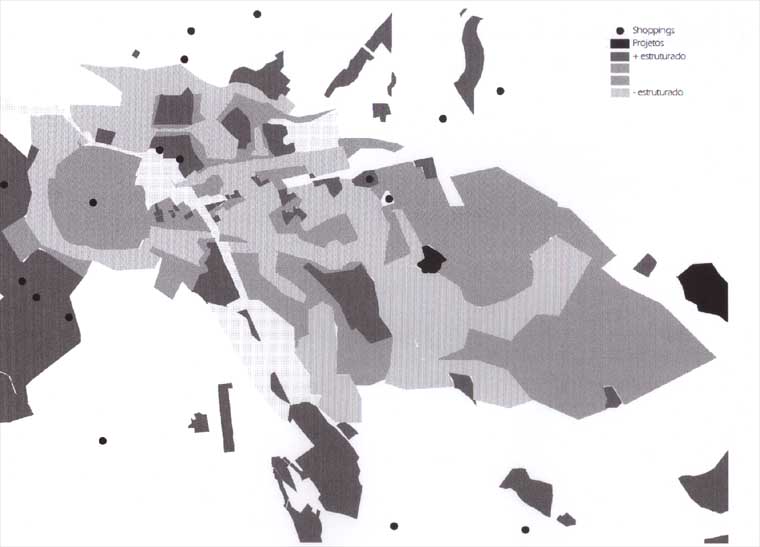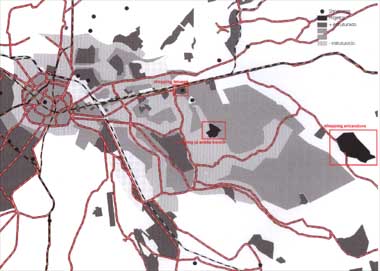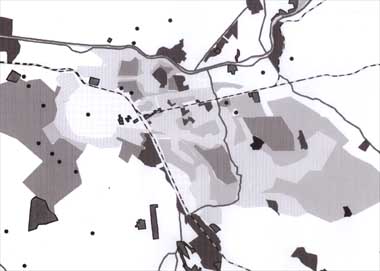Destructuring Process
|
|
| x |
|
|
|
These indefinite and uncertain spaces incarnate the oscillations, the instability, of the urban territory in this process. Islands of activity emptiness, these are spaces that exist outside the productive structures and circuits of the city, remainders of the diverse reconfiguration operations in larger and complex scales.
A new urban configuration results from there: randomic and turbulent juxtaposition of entities that have nothing in common except its coexistence, produced by the dynamics of fields of force in continuous movement. Great urban figures that don’t join anymore through local urban cement, but by floating fragments of areas with new uses. Its space matrix is a form of weak coherence, with open linkages.
Once
abstracting the road tracing, it becomes clear that the East Zone
doesn’t have large structuralized areas. These vast interstitial
terrains are what give it potential for a large-scale global
restructuring. |


